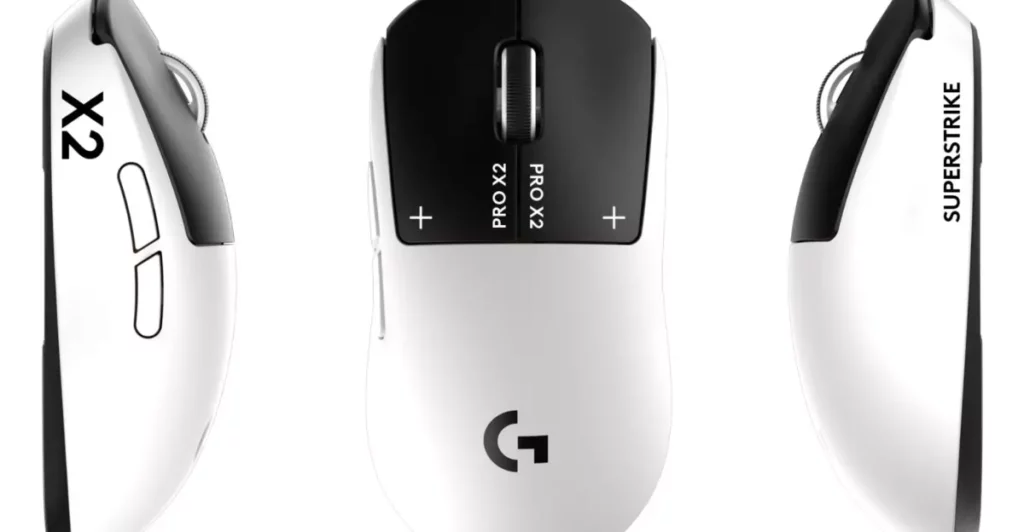Logitech’s new flagship, the Pro X2 Superstrike, boldly ventures into uncharted territory by replacing conventional mechanical switches with an innovative analog sensor system enhanced by haptic technology. This decision symbolizes a pivotal shift in gaming hardware design, one that risks alienating purists who value tactile mechanical switches but promises a future where digital precision and speed are prioritized over traditional feedback. At the heart of this evolution is the Haptic Inductive Trigger System (HITS), which aims to simulate click sensations through vibrations rather than physical actuation. Although this approach appeals to a specific niche of tech enthusiasts eager for cutting-edge innovation, it raises serious doubts about whether such technological abstraction can truly substitute the satisfying, unmistakable feel of mechanical switches that gamers have depended on for decades.
This shift underscores a broader trend within the gaming industry: manufacturers racing to integrate novel sensors that promise faster response times and more granular control. Logitech claims a latency improvement of up to 30 milliseconds, a figure that sounds promising but needs empirical validation to be genuinely impactful. The concept of “rapid trigger” support, allowing the mouse to reset quickly after a barely lifted button, exemplifies this drive towards minimizing input lag. Yet, one must question whether these ultra-specific features will translate into tangible in-game advantages or if they are merely clever marketing pitches. It’s easy to get caught up in the promise of technological superiority, but the question remains—are gamers truly benefitting from this radical innovation, or are they just being sold a shiny new gadget that overpromises?
The Sacrifice of Familiarity in the Pursuit of Progress
At 65 grams, the Superstrike demonstrates Logitech’s commitment to ultralight design, a trend that has gained momentum among competitive gamers seeking every ounce of speed. However, weight is only one aspect of a mouse’s ergonomics, and the decision to replace tactile switches with an analog system could impact user experience profoundly. Many gamers prefer the dependable feedback of traditional mechanical switches, which offer immediate confirmation of a click without reliance on vibrations or haptic cues. Removing this tactile certainty runs the risk of diminishing trust in the hardware, especially in high-stakes gaming scenarios where milliseconds matter.
Furthermore, the system’s emphasis on a customizable, granular setup—featuring five programmable rapid trigger reset points—might appeal to the tech-savvy but could intimidate casual users. The complexity of configuring these features through Logitech’s G Hub software may turn away gamers craving simplicity and consistency. Additionally, the high price point of $179.99 signifies that Logitech expects this to be a premium product, yet it feels more like an experimental feature set rather than a definitive upgrade. For many, this might be a premium priced gamble on unproven technology rather than a logical step forward in reliable gaming peripherals.
Questioning the Merit of Ultra-High Polling Rates
Logitech’s announcement of an 8,000Hz wireless polling rate, supported via its Lightspeed USB-A dongle, adds another layer of controversy. While at first glance, it seems like a desirable feature—offering smoother tracking and potentially marginally faster input recognition—the reality is far more complex. Human reaction times rarely surpass the threshold where such high polling rates make a discernible difference. Many experts argue that the law of diminishing returns applies here; increasing polling rates beyond a certain point results in negligible improvements for most users.
Yet, Logitech’s bold claim hints at a future where hardware specifications are pushed to extremes, perhaps setting a new standard in gaming peripherals. However, this push for technological perfection risks turning gaming mice into overly complicated devices that prioritize specifications over real-world functionality. The question remains: is this ultra-high polling rate a true competitive advantage or a marketing veneer designed to justify the product’s premium price and cutting-edge marketing narrative? It’s a contentious issue that demands skepticism—what benefits do superfine specifications provide in a domain where human perception and reaction dominate?
A Center-Right Approach to Gaming Innovation
Positioning itself within a center-right, libertarian-friendly perspective, Logitech’s approach exemplifies an underlying belief that minimal regulation and a free market are critical drivers of innovation. The company’s willingness to experiment with unfamiliar sensory feedback methods and ultra-fast response times underscores a reliance on consumer choice and technological progress rather than government mandates or industry standards dictating what gaming hardware should look like.
However, this ideology must be tempered with a recognition of responsible innovation: not every leap forward is universally beneficial. In the case of the Superstrike, it’s clear that Logitech is betting on a future where digital simulation can replicate—and perhaps, improve upon—the tactile familiarity of mechanical switches. Yet, whether this gamble pays off hinges on player acceptance, real-world performance, and the ability of the technology to truly deliver a faster, more responsive experience without sacrificing reliability. As a center-right advocate for innovation, I believe this push for technological advancement should be balanced with a commitment to proven efficacy, ensuring that consumer pursuits of novelty do not overshadow fundamental functionality.









Leave a Reply